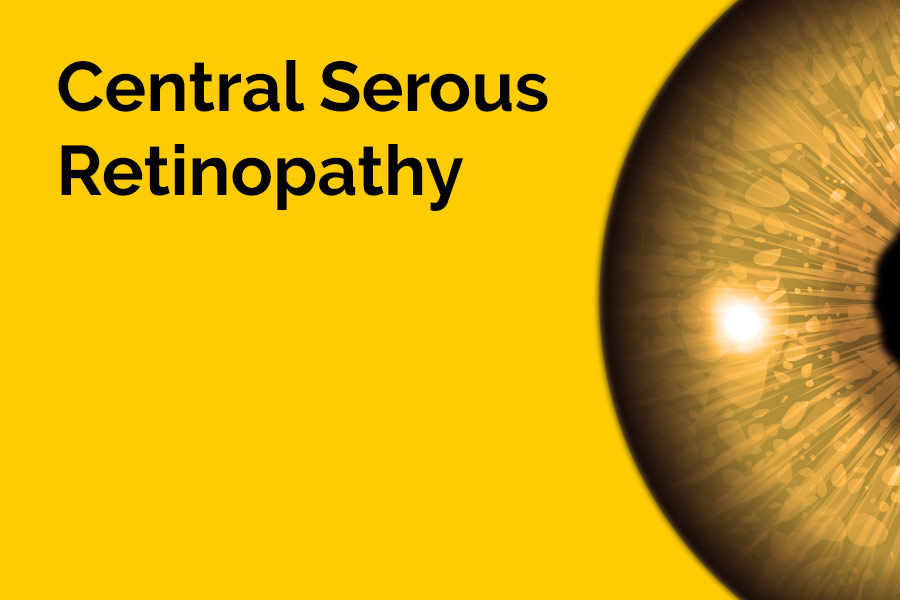Central Serous Retinopathy
Central Serous Retinopathy or CSR affects the central area of your retina, known as the macula. CSR can cause your vision to be blurry and distorted due to fluid collecting underneath your macula. Objects also appear smaller and distorted in the affected eye.
In most people, CSR gets better on its own and will not lead to serious long-term damage to your vision. Unfortunately, it some people, it may reoccur. The more times someone has CSR, the higher the chance of having some permanent changes in your vision.
Central serous retinopathy is also known as central serous chorioretinopathy.
Symptoms
Symptoms of CSR mainly include issues with your central vision. Problems generally occur in one eye however it can affect both males and females. Young men are generally more affected by the condition.
One of the most common symptoms is blurred vision or distorted vision in one eye. If you suffer from CSR you may experience fuzzy vision and your sight may look like it has a brown or dull colouring to it.
Blind spots in your vision, an oversensitivity to light levels and seeing objects smaller than they actually are, are also symptoms of CSR. The condition does however not always present visible symptoms.
Diagnosis, Screening and Tests
In order to detect central serous retinopathy, your doctor will conduct a complete dilated eye examination in both eyes in order to obtain an image of the retina. Retinal photographs may also be taken in order to document the appearance of the disease.
Optical coherence tomography (OCT) is a retinal scan that is very useful in diagnosing central serous retinopathy; it allows your doctor to view the retina at the microscopic level. This makes it possible to view very small pockets of fluid or retinal scarring in acute or chronic CSC.
Fluorescein angiography is a test in which a dye is injected into the vein of a patients arm and pictures are taken of each eye to detect any leakage of the dye beneath the patient’s retina. These tests allow your doctor to distinguish CSC from other retinal diseases causing fluid in the macula.
Treatments
The majority of patients recover spontaneously within 4 to 6 months and do not require any treatment. Any associated steroid medication should be stopped if possible. If the condition does not resolve itself within 6 months, patients can opt to receive laser photocoagulation to the leaking spot within the retina if the source is away from the sensitive central retina known as the fovea.
Chronic cases of CSR are difficult to treat. ‘Cold’ laser treatments such as photodynamic therapy with Verteporfin have proved successful in a number of cases. Oral medication such as spironolactone seems to have varying success rates.
